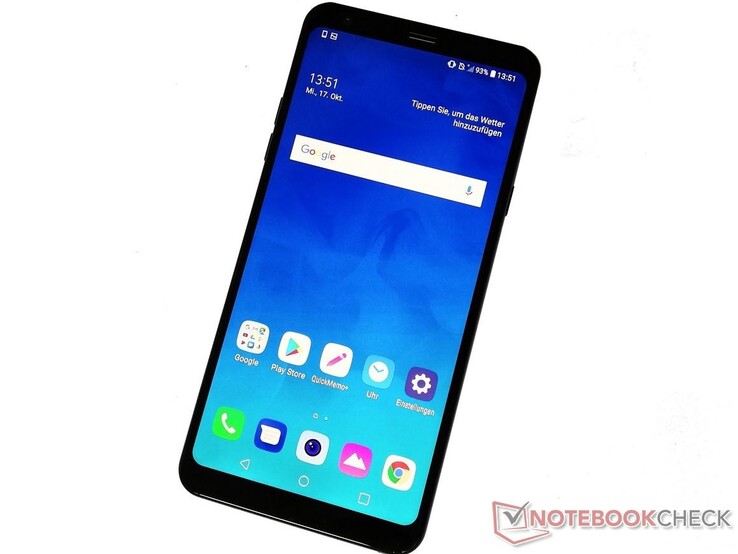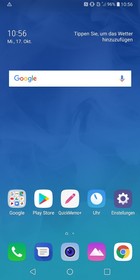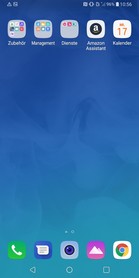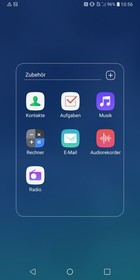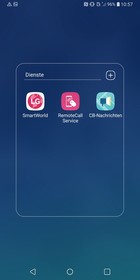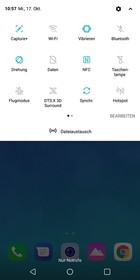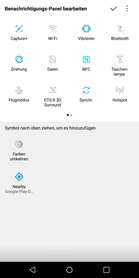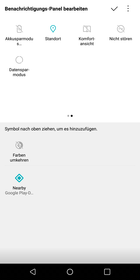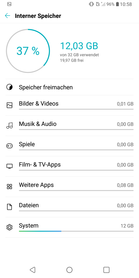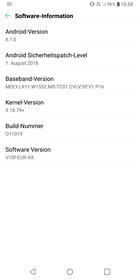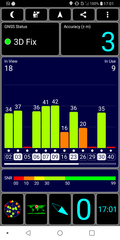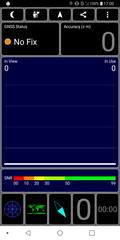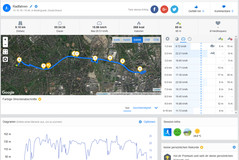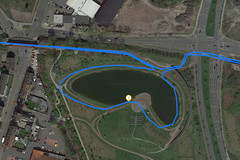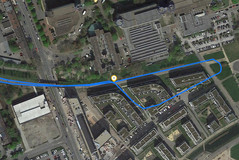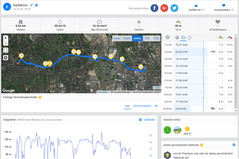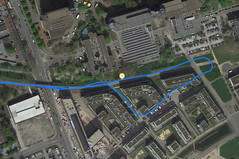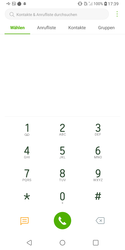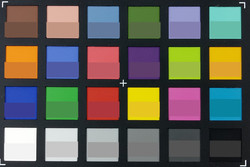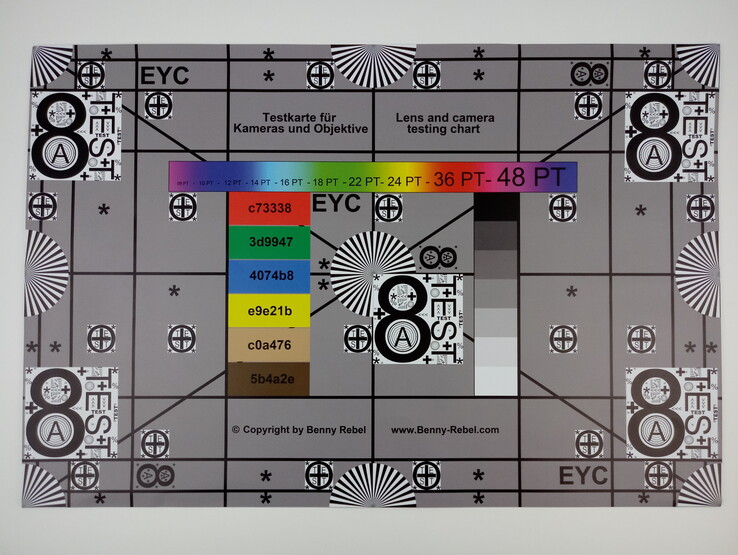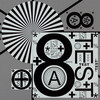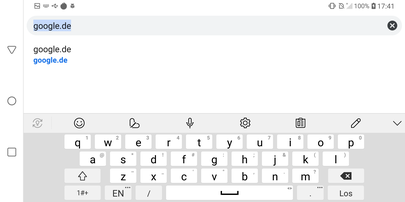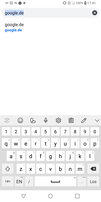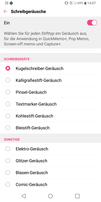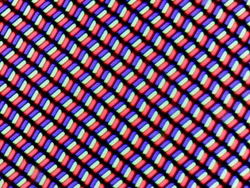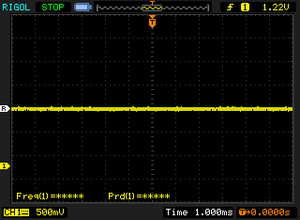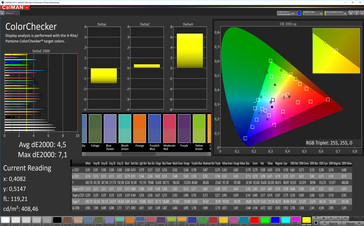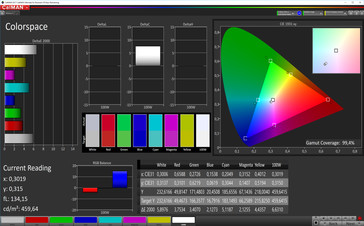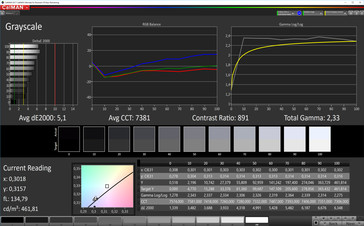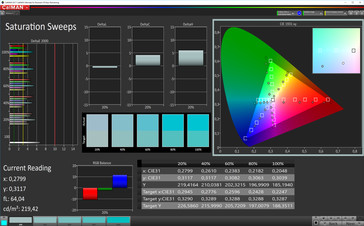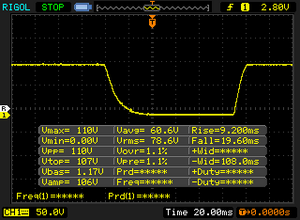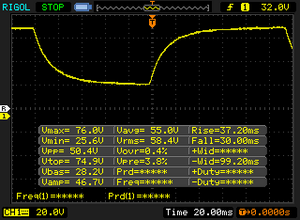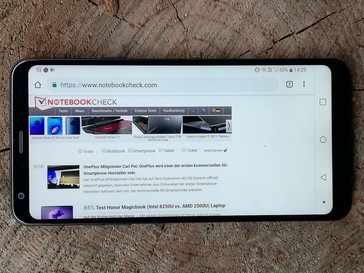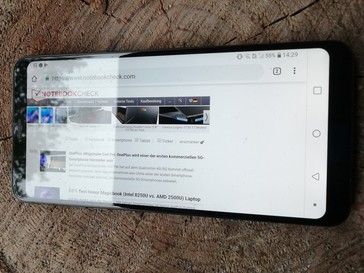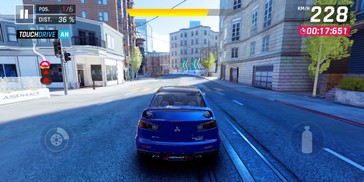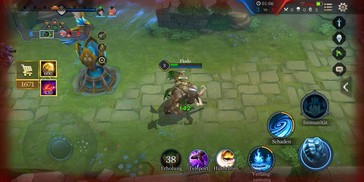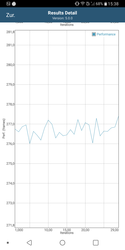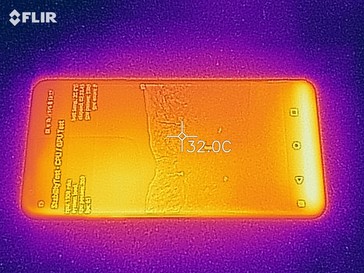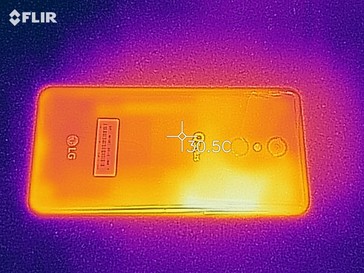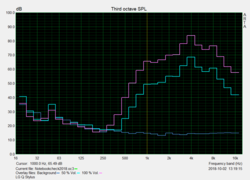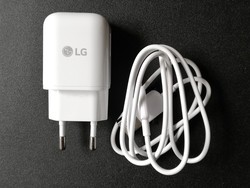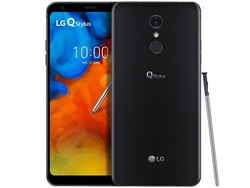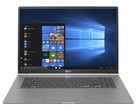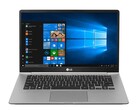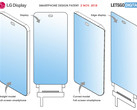LG Q Stylus Smartphone Review
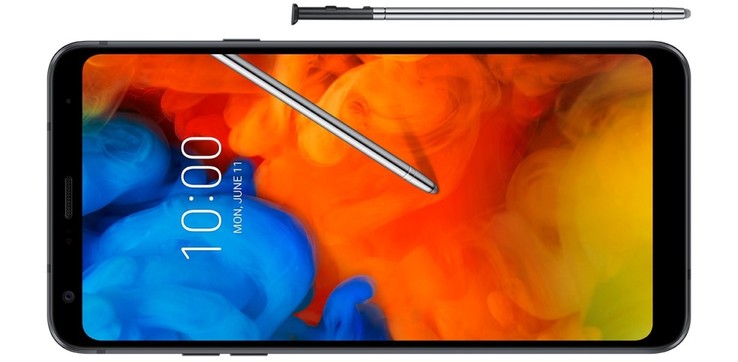
The Q Stylus is not the first scratch, water and shock-proof device from LG that we have tested. The LG K11 already impressed us with its robust build. Both smartphones are certified according to the MIL-STD-810G and IP68 standards. On top of this, their cases are made of metal and the Q Stylus features an input pen in its case.
LG has equipped our test unit with the mid-range SoC MT6750S from MediaTek and an ARM Mali T860 MP2. Combined with 3 GB of RAM and 32 GB of eMMC flash storage, this device should offer users smooth system performance.
As there are no comparable smartphones with a stylus in this price range, we have included the Samsung Galaxy Note 9 in our review. The other comparison devices are mid-range devices without a stylus but in the same price range as the LG Q Stylus. These include the Xiaomi Pocophone F1, the Sharps B10, the Sony Xperia XA2 Plus and the Wiko View 2 Pro.
Case - a stylus in a smartphone
LG has given the Q Stylus a metal case, but this is only visible along the edges. The back is covered with an acrylic-style plastic that is prone to scratches. The workmanship, however, is perfect. The transitions between different materials are very even and gapless. Only the power and volume buttons don't sit completely tight.
The case of the LG Q Stylus is certified according to the military standard MIL-STD-810G, which means it is shock-proof, and according to the IP68 standard, which makes it water and dust-proof. As mentioned above, the LG smartphone is not protected from scratches on the back. However, the case looks like it should survive the occasional drop without damage. The stylus sits tightly in its shaft and can be pulled out of the smartphone via a little hook at the bottom left of the device.
Our test unit is a little larger than its comparison devices and is almost the size of the Galaxy Note 9. Particularly its weight sets the Q Stylus apart from its competitors that feature a stylus. Other smartphones in this price range are a little smaller and lighter but have smaller displays and are not shock, dust and water-proof.
Connectivity - mid-range LG phone
The LG Q Stylus is equipped with a MediaTek MT6750S SoC, an ARM Mali T860 MP2 GPU, 3 GB of RAM and 32 GB of eMMC flash storage. This equipment is typical for a lower mid-range smartphone and enables smooth system performance. The phone has a USB Type-C port for charging and cable-based data transfers. This only has 2.0 speeds but still supports OTG functions such as charging from other devices. Users can connect external speakers or headphones via the 3.5-mm audio jack.
There is a combined slot for the nanoSIM and microSD card on the left side of the device. The latter can be used to expand internal storage by up to 2 TB and also supports the exFAT format.
Software - LG Q Stylus with Android Oreo
Users of the LG Q Stylus will have Android Oreo 8.1 available. The security patches are dated August 1, 2018 at the time of writing. The user interface sticks mainly to Stock Android, but LG has made some structural changes to the settings menu. The new arrangement is very intuitive and new users will find their way around very quickly.
Most of the preinstalled apps can only be deactivated, not uninstalled. The same goes for the preinstalled Amazon Assistant. LG supplies users with special app suggestions and additional software for the Q Stylus via the SmartWorld app.
The LG Q Stylus supports the use of individual user accounts, which can be set up in the settings.
Communication and GPS - Android smartphone with LTE
The LG Q Stylus can connect to GSM, 3G and LTE networks. The latter reaches LTE category 6 - this enables download rates of up to 300 Mb/s and upload rates of up to 50 Mb/s. Apart from Bluetooth 4.2, users can also use NFC to exchange data such as payment information within the near-field range.
The LG smartphone only supports the comparatively slow Wi-Fi standards b, g and n. This means that the Q Stylus' measured transfer rates are below average. While the reception rates place the device in the lower mid-range of our comparison table, the LG phone must accept last place when transmitting data.
| Networking | |
| iperf3 transmit AX12 | |
| Xiaomi Poco F1 | |
| Samsung Galaxy Note 9 | |
| Sony Xperia XA2 Plus | |
| Sharp B10 | |
| Wiko View 2 Pro | |
| LG Q Stylus | |
| iperf3 receive AX12 | |
| Xiaomi Poco F1 | |
| Samsung Galaxy Note 9 | |
| Sony Xperia XA2 Plus | |
| LG Q Stylus | |
| Sharp B10 | |
| Wiko View 2 Pro | |
The GPS Test app tests how well the LG Q Stylus can locate its own position, for which it has GPS and GLONASS available. The phone positioned us within three meters outdoors but could not find a connection indoors. The Android smartphone also supports the satellite-based augmentation system SBAS which enables more precise positioning.
Our obligatory bike tour tests the LG Q Stylus in comparison with the professional navigation system Garmin Edge 500. The recorded route information shows that the Q Stylus often positioned us beside the path, on the wrong side of the road and in buildings. On the other hand, it managed to trace bends very well. This means the LG Q Stylus is suitable for simple navigation.
Telephone and Voice Quality - good connection with the LG smartphone
LG has installed its own telephone app that offers direct access to the dial pad and gives access to the call history, contacts and groups via tabs. The menu enables users to easily set up their mail box and call barring service. A small message symbol guides users directly to the messaging app.
The LG smartphone offers good volume during calls, although the sound spectrum is limited to highs. We were able to understand our call partners well although their voices did not always sound very strong. The smartphone counterbalances ambient noise very well.
The speakers of the Q Stylus are also suitable for using speakerphone mode. Again, the volume is sufficient to be able to understand your call partner even in louder surroundings. The 3.5-mm audio jack can be used to connect wired headsets.
Cameras - LG phone for snapshots
LG has equipped the Q Stylus with a 16-MP rear camera and an 8-MP front camera. The latter takes mediocre portraits. The image center is sharp and details are good. However, objects in the background come out blurry and the entire photo looks rather washed out. The menu of the camera app enables you to add various color filters over selfie images and a soft-focus effect is also available.
The main camera of the Q Stylus enables fast snapshots and takes fairly good pictures of certain objects. It distinguishes well between objects within the focal area and offers a lot of details there. The background, however, is blurry and grainy when zoomed in. Overall, the photo appears too washed out. The camera can also take sharp, high-detail close-ups. Again, colors are not very strong and the background is blurry. These blurry objects have even more graininess. Pictures taken in low lighting come out very badly. Our original subject is hardly visible on the dark image, so much so that you can only just make out what the object might be. The camera app only offers various color filters. There is no professional mode available.
The video function of the camera offers a similar quality to our test shots. An image stabilizer balances out small camera shakes. Again, there is no mode for more detailed control over the recording settings.
The ColorChecker Passport is used to check the color reproduction of the camera. You can see from the image below that colors appear too light. Dark gray and black tones are also darker than they should be.
Our test chart is reproduced nicely by the LG camera. Details remain visible and colors are reproduced clearly. However, the image becomes less sharp towards the edges and particularly the bottom corners are rather washed out.
Accessories and Warranty - 24 months of warranty with LG
The Q Stylus comes with a USB power supply and a tool to open the nanoSIM/microSD tray. LG does not offer any accessories that are made for the Q Stylus in particular, but the manufacturer's shop sells wireless stereo headsets that are also compatible with the Stylus smartphone.
The Q Stylus comes with a 24-month warranty. Please see our Guarantees, Return policies and Warranties FAQ for country-specific information.
Input Devices & Handling - LG smartphone with stylus
LG has installed its own keyboard app on the Q Stylus. Users can change the appearance of the keyboard; the default mode is ideal for use with the stylus. The keys are rather small so that it is not easy to hit them with your fingers. The stylus makes inputs a lot easier and is very reliable.
When taking the stylus out of its shaft at the bottom right corner of the device, a small menu pops up on the screen that gives users direct access to the notepad or the coloring app ScratchArt. This makes quick note taking from standby very easy and uncomplicated. The stylus is very thin and feels like a ballpoint pen refill cartridge. The small round tip glides over the screen with almost no resistance and writing feels comfortable. This makes the LG Q Stylus an ideal notebook replacement.
The position sensor of the Q Stylus responds well to movements and adjusts the screen quickly when it is turned on its side or upside down. The integrated fingerprint reader wakes and unlocks the smartphone quickly and reliably.
Display - 6.2-inch smartphone from LG
The screen of the Q Stylus is a 6.2-inch IPS panel with a resolution of 2160x1080 pixels. LG has decided against a notch and still manages to offer a large screen for the size of the smartphone. The rounded edges also make the display seem to flow into the case. The brightness of 441 cd/m² is average among our comparison devices. Combined with a brightness distribution of 94%, these results can be considered good.
| |||||||||||||||||||||||||
Brightness Distribution: 94 %
Center on Battery: 458 cd/m²
Contrast: 898:1 (Black: 0.51 cd/m²)
ΔE ColorChecker Calman: 4.5 | ∀{0.5-29.43 Ø4.78}
ΔE Greyscale Calman: 5.1 | ∀{0.09-98 Ø5}
99.4% sRGB (Calman 2D)
Gamma: 2.33
CCT: 7381 K
| LG Q Stylus IPS, 2160x1080, 6.2" | Samsung Galaxy Note 9 Super AMOLED, 2960x1440, 6.4" | Sharp B10 IPS, 1440x720, 5.7" | Xiaomi Poco F1 IPS, 2246x1080, 6.2" | Wiko View 2 Pro IPS, 1528x720, 6" | Sony Xperia XA2 Plus IPS, 2160x1080, 6" | |
|---|---|---|---|---|---|---|
| Screen | 4% | -1% | 17% | -32% | 39% | |
| Brightness middle (cd/m²) | 458 | 499 9% | 560 22% | 489 7% | 562 23% | 597 30% |
| Brightness (cd/m²) | 441 | 506 15% | 549 24% | 486 10% | 541 23% | 592 34% |
| Brightness Distribution (%) | 94 | 96 2% | 90 -4% | 93 -1% | 92 -2% | 92 -2% |
| Black Level * (cd/m²) | 0.51 | 0.63 -24% | 0.34 33% | 0.56 -10% | 0.32 37% | |
| Contrast (:1) | 898 | 889 -1% | 1438 60% | 1004 12% | 1866 108% | |
| Colorchecker dE 2000 * | 4.5 | 4.62 -3% | 5.02 -12% | 3.8 16% | 7.9 -76% | 2.4 47% |
| Colorchecker dE 2000 max. * | 7.1 | 10.91 -54% | 8.71 -23% | 7.1 -0% | 15.7 -121% | 5.3 25% |
| Greyscale dE 2000 * | 5.1 | 2.2 57% | 4.6 10% | 4.4 14% | 10.4 -104% | 3.4 33% |
| Gamma | 2.33 94% | 2.103 105% | 2.216 99% | 2.22 99% | 2.02 109% | 2.2 100% |
| CCT | 7381 88% | 6115 106% | 7587 86% | 7213 90% | 8834 74% | 7172 91% |
* ... smaller is better
Screen Flickering / PWM (Pulse-Width Modulation)
| Screen flickering / PWM not detected | |||
In comparison: 53 % of all tested devices do not use PWM to dim the display. If PWM was detected, an average of 8118 (minimum: 5 - maximum: 343500) Hz was measured. | |||
The LG Q Stylus has a mediocre contrast ratio of 898:1 according to our measurements and an increased black value of 0.51 cd/m². Colors, however, can be told apart very well while blacks have a significant gray cast.
The screen has a slight blue cast ex-works. The color temperature can be adjusted in the settings via a blue light filter. There are also other functions available, such as making the display appear only in black and white.
Display Response Times
| ↔ Response Time Black to White | ||
|---|---|---|
| 28.8 ms ... rise ↗ and fall ↘ combined | ↗ 9.2 ms rise | |
| ↘ 19.6 ms fall | ||
| The screen shows relatively slow response rates in our tests and may be too slow for gamers. In comparison, all tested devices range from 0.1 (minimum) to 240 (maximum) ms. » 75 % of all devices are better. This means that the measured response time is worse than the average of all tested devices (20.2 ms). | ||
| ↔ Response Time 50% Grey to 80% Grey | ||
| 67.2 ms ... rise ↗ and fall ↘ combined | ↗ 37.2 ms rise | |
| ↘ 30 ms fall | ||
| The screen shows slow response rates in our tests and will be unsatisfactory for gamers. In comparison, all tested devices range from 0.165 (minimum) to 636 (maximum) ms. » 98 % of all devices are better. This means that the measured response time is worse than the average of all tested devices (31.6 ms). | ||
The LG smartphone is easy to use outdoors as long as you find a shady spot. On overcast days, the brightness is also sufficient to display content legibly. However, it becomes increasingly difficult to read the screen in direct sunlight. This is made even more difficult by the reflection of nearby objects on the screen.
Performance - an Android smartphone suitable for everyday use
LG has equipped the Q Stylus with a MediaTek MT6750S and an ARM Mali T860 MP2. Combined with 3 GB of RAM and 32 GB of eMMC flash storage, this makes the device a lower mid-range phone. The Android system runs smoothly on this hardware and most everyday applications can be used without any issues.
The benchmark tests position the LG smartphone where we would have expected it to be. However, its performance is below average compared to other Android phones in its price range. This is particularly true in tests that are demanding on the graphics performance.
| PCMark for Android - Work performance score (sort by value) | |
| LG Q Stylus | |
| Samsung Galaxy Note 9 | |
| Sharp B10 | |
| Xiaomi Poco F1 | |
| Wiko View 2 Pro | |
| Sony Xperia XA2 Plus | |
| Average Mediatek MT6750S (3969 - 4101, n=2) | |
| AnTuTu v7 - Total Score (sort by value) | |
| LG Q Stylus | |
| Samsung Galaxy Note 9 | |
| Sharp B10 | |
| Xiaomi Poco F1 | |
| Wiko View 2 Pro | |
| Sony Xperia XA2 Plus | |
| Average Mediatek MT6750S (52855 - 56626, n=2) | |
| AnTuTu v6 - Total Score (sort by value) | |
| LG Q Stylus | |
| Samsung Galaxy Note 9 | |
| Sharp B10 | |
| Xiaomi Poco F1 | |
| Wiko View 2 Pro | |
| Sony Xperia XA2 Plus | |
| Average Mediatek MT6750S (44064 - 45829, n=2) | |
The LG Q Stylus also fares as expected in the browser benchmarks. Compared to its competition, it again has to accept low ratings. However, we did not encounter any difficulties with our test unit during everyday use. Websites load quickly while browsing the web and media also loads within a short time.
| JetStream 1.1 - Total Score | |
| Xiaomi Poco F1 (Chrome 68) | |
| Samsung Galaxy Note 9 (Chrome 68) | |
| Sony Xperia XA2 Plus (Chrome 67) | |
| Wiko View 2 Pro (Chrome 67) | |
| LG Q Stylus (hrome 69) | |
| Average Mediatek MT6750S (18.7 - 19.2, n=2) | |
| Sharp B10 (Chrome 68) | |
| Octane V2 - Total Score | |
| Average of class Smartphone (2228 - 121337, n=200, last 2 years) | |
| Samsung Galaxy Note 9 (Chrome 68) | |
| Xiaomi Poco F1 (Chrome 68) | |
| Sony Xperia XA2 Plus (Chrome 67) | |
| Wiko View 2 Pro (Chrome 67) | |
| LG Q Stylus (hrome 69) | |
| Average Mediatek MT6750S (3422 - 3474, n=2) | |
| Sharp B10 (Chrome 68) | |
| Mozilla Kraken 1.1 - Total | |
| Sharp B10 (Chrome 68) | |
| Average Mediatek MT6750S (13203 - 13671, n=2) | |
| LG Q Stylus (hrome 69) | |
| Wiko View 2 Pro (Chrome 67) | |
| Sony Xperia XA2 Plus (Chrome 67) | |
| Xiaomi Poco F1 (Chrome 68) | |
| Samsung Galaxy Note 9 (Chrome 68) | |
| Average of class Smartphone (257 - 28190, n=155, last 2 years) | |
| WebXPRT 3 - Overall | |
| Average of class Smartphone (38 - 380, n=35, last 2 years) | |
| Samsung Galaxy Note 9 (Chrome 68) | |
| Sony Xperia XA2 Plus (Chrome 67) | |
| LG Q Stylus (Chrome 69) | |
| Average Mediatek MT6750S (19 - 25, n=2) | |
| WebXPRT 2015 - Overall | |
| Xiaomi Poco F1 (Chrome 68) | |
| Samsung Galaxy Note 9 (Chrome 68) | |
| Sony Xperia XA2 Plus (Chrome 67) | |
| LG Q Stylus (hrome 69) | |
| Average Mediatek MT6750S (70 - 71, n=2) | |
* ... smaller is better
LG has equipped the Q Stylus with 32 GB eMMC flash storage of which the user has about 19.5 GB available after initial setup. Compared to its competitors, the LG's storage offers average read and write rates that do not have a negative impact on system performance.
The storage of the LG Q Stylus can be expanded by up to 2 TB via the internal microSD card reader. This additional storage can be used to store data, images and videos. Unfortunately, it is not possible to format the microSD card as internal storage to store apps on it. The SD card reader managed good transfer rates in our test with our reference card, the Toshiba Exceria Pro M501. They are on par with those of comparable devices.
| LG Q Stylus | Samsung Galaxy Note 9 | Sharp B10 | Xiaomi Poco F1 | Wiko View 2 Pro | Sony Xperia XA2 Plus | Average 32 GB eMMC Flash | Average of class Smartphone | |
|---|---|---|---|---|---|---|---|---|
| AndroBench 3-5 | 115% | -16% | 83% | 21% | 30% | 12% | 1437% | |
| Sequential Read 256KB (MB/s) | 241.7 | 805 233% | 280.7 16% | 705 192% | 265.4 10% | 281.1 16% | 242 ? 0% | 2223 ? 820% |
| Sequential Write 256KB (MB/s) | 121.4 | 196 61% | 100.5 -17% | 155.6 28% | 194.3 60% | 146.2 20% | 100.5 ? -17% | 1838 ? 1414% |
| Random Read 4KB (MB/s) | 31.45 | 134 326% | 54.6 74% | 101 221% | 65.6 109% | 77.4 146% | 43.1 ? 37% | 295 ? 838% |
| Random Write 4KB (MB/s) | 12.07 | 21 74% | 12.9 7% | 17.81 48% | 6.72 -44% | 10.5 -13% | 22.3 ? 85% | 335 ? 2675% |
| Sequential Read 256KB SDCard (MB/s) | 83.1 ? | 77 ? -7% | 9.83 ? -88% | 85.3 ? 3% | 82.3 ? -1% | 86 ? 3% | 71.8 ? -14% | |
| Sequential Write 256KB SDCard (MB/s) | 63.5 ? | 66.7 ? 5% | 6.8 ? -89% | 65.6 ? 3% | 57.8 ? -9% | 67 ? 6% | 52.9 ? -17% |
Games - LG phone for simple games
The LG Q Stylus uses the ARM Mali T860 MP2 to display image content. Its performance is sufficient for graphically less-demanding applications. More-demanding games have long loading times and can only be played in low settings if you want a smooth gaming experience. The games tested by us were displayed smoothly despite their frame rates being below 30.
The touchscreen controls games very well and responds to inputs without delay. The position sensor also responds quickly with only slight delays.
| Asphalt 9: Legends | |||
| Settings | Value | ||
| High Quality | 16 fps | ||
| Standard / low | 23 fps | ||
| Arena of Valor | |||
| Settings | Value | ||
| min | 27 fps | ||
| high HD | 26 fps | ||
Emissions - average speaker quality of the LG Q Stylus
Temperature
The surface temperatures of the LG Q Stylus reach a maximum of 27 °C while the device is idle and are quite moderate under load with a maximum of 35 °C. The LG smartphone can therefore easily be used in everyday use without experiencing limitations due to high temperature development.
The demanding GFXBench Manhattan test shows that the Android smartphone has consistent performance without being throttled by high temperatures.
(+) The maximum temperature on the upper side is 34.1 °C / 93 F, compared to the average of 35.2 °C / 95 F, ranging from 21.9 to 247 °C for the class Smartphone.
(+) The bottom heats up to a maximum of 35.3 °C / 96 F, compared to the average of 34 °C / 93 F
(+) In idle usage, the average temperature for the upper side is 24.8 °C / 77 F, compared to the device average of 32.9 °C / 91 F.
Speakers
The speakers of the Q Stylus are comparatively loud but are limited to the higher end of the sound spectrum. Mids and lows become increasingly quiet. Therefore, audio does not have a lot of power. The LG smartphone supports the DTS:X audio format that produces a more spatial sound.
External speakers and headphones can be connected to the Android phone via its 3.5-mm audio jack. The port is sufficiently tight and does not have a negative effect on audio quality.
LG Q Stylus audio analysis
(+) | speakers can play relatively loud (87.6 dB)
Bass 100 - 315 Hz
(-) | nearly no bass - on average 43.2% lower than median
(+) | bass is linear (4.1% delta to prev. frequency)
Mids 400 - 2000 Hz
(±) | reduced mids - on average 11.2% lower than median
(±) | linearity of mids is average (13.5% delta to prev. frequency)
Highs 2 - 16 kHz
(±) | higher highs - on average 13.6% higher than median
(±) | linearity of highs is average (10.3% delta to prev. frequency)
Overall 100 - 16.000 Hz
(-) | overall sound is not linear (40.8% difference to median)
Compared to same class
» 86% of all tested devices in this class were better, 0% similar, 13% worse
» The best had a delta of 11%, average was 35%, worst was 134%
Compared to all devices tested
» 95% of all tested devices were better, 0% similar, 5% worse
» The best had a delta of 4%, average was 24%, worst was 134%
Sony Xperia XA2 Plus audio analysis
(+) | speakers can play relatively loud (84.7 dB)
Bass 100 - 315 Hz
(-) | nearly no bass - on average 30.7% lower than median
(±) | linearity of bass is average (10.6% delta to prev. frequency)
Mids 400 - 2000 Hz
(+) | balanced mids - only 4.8% away from median
(+) | mids are linear (5.7% delta to prev. frequency)
Highs 2 - 16 kHz
(±) | higher highs - on average 6.6% higher than median
(+) | highs are linear (2.2% delta to prev. frequency)
Overall 100 - 16.000 Hz
(±) | linearity of overall sound is average (24.5% difference to median)
Compared to same class
» 58% of all tested devices in this class were better, 7% similar, 35% worse
» The best had a delta of 11%, average was 35%, worst was 134%
Compared to all devices tested
» 73% of all tested devices were better, 6% similar, 21% worse
» The best had a delta of 4%, average was 24%, worst was 134%
Battery Runtime - LG smartphone lasts seven hours
Power Consumption
Our test shows that the Q Stylus is energy-efficient. It consumes a minimum of 0.69 watts while idling and a maximum of 5.31 watts under load. This places the LG smartphone in second place in our comparison table. The included 16-watt power supply supports LG's fast-charge technology and is large enough to always supply the Q Stylus with power.
| Off / Standby | |
| Idle | |
| Load |
|
Key:
min: | |
| LG Q Stylus 3300 mAh | Samsung Galaxy Note 9 4000 mAh | Sharp B10 4000 mAh | Xiaomi Poco F1 4000 mAh | Wiko View 2 Pro 3000 mAh | Sony Xperia XA2 Plus 3580 mAh | Average Mediatek MT6750S | Average of class Smartphone | |
|---|---|---|---|---|---|---|---|---|
| Power Consumption | -53% | -42% | -26% | -1% | 8% | -7% | -46% | |
| Idle Minimum * (Watt) | 0.69 | 0.9 -30% | 1 -45% | 0.65 6% | 0.64 7% | 0.35 49% | 0.845 ? -22% | 0.848 ? -23% |
| Idle Average * (Watt) | 1.7 | 1.9 -12% | 1.98 -16% | 1.97 -16% | 2.07 -22% | 1.81 -6% | 1.635 ? 4% | 1.435 ? 16% |
| Idle Maximum * (Watt) | 1.73 | 3.7 -114% | 2.5 -45% | 2.01 -16% | 2.13 -23% | 1.83 -6% | 1.685 ? 3% | 1.621 ? 6% |
| Load Average * (Watt) | 3.21 | 5.3 -65% | 5.3 -65% | 4.29 -34% | 2.69 16% | 3.31 -3% | 3.66 ? -14% | 6.99 ? -118% |
| Load Maximum * (Watt) | 5.31 | 7.6 -43% | 7.4 -39% | 9.05 -70% | 4.46 16% | 4.97 6% | 5.67 ? -7% | 11.3 ? -113% |
* ... smaller is better
Battery Runtime
Despite the low power consumption, the battery runtime of the LG Q Stylus is below average. Comparable smartphones with similarly large batteries offer double the runtime. Our Wi-Fi test lasted seven hours before our test unit had to recharge.
The included fast-charge power supply recharges the 3300-mAh battery in two hours.
| LG Q Stylus 3300 mAh | Samsung Galaxy Note 9 4000 mAh | Sharp B10 4000 mAh | Xiaomi Poco F1 4000 mAh | Wiko View 2 Pro 3000 mAh | Sony Xperia XA2 Plus 3580 mAh | |
|---|---|---|---|---|---|---|
| Battery runtime | 62% | 116% | 55% | 104% | 136% | |
| Reader / Idle (h) | 25.5 | 28.1 10% | 34.8 36% | 78 206% | ||
| H.264 (h) | 8.8 | 14.9 69% | 15.6 77% | 14.9 69% | ||
| WiFi v1.3 (h) | 7 | 13.2 89% | 15.1 116% | 13.5 93% | 14.3 104% | 14 100% |
| Load (h) | 3.3 | 5.9 79% | 3.7 12% | 8.8 167% |
Pros
Cons
Verdict - affordable smartphone with stylus
The LG Q Stylus presents itself as a sturdy smartphone for everyday use. It offers good performance and can manage a little more than your basic WhatsApp use and Internet browsing. The included stylus gives this device a unique feature for this price range.
The LG Q Stylus with its stylus is unique for this price range. Its performance is good, but battery runtimes could be better.
Potential buyers should be aware of the mediocre battery runtime, which is a lot shorter than those of competing devices. The cameras are good enough for occasional snapshots but not much more. The Q Stylus can be used for gaming, although users should not have too high expectations as the loading times can be very long and frame rates low in more-demanding titles.
LG Q Stylus
- 10/26/2018 v6 (old)
Mike Wobker




